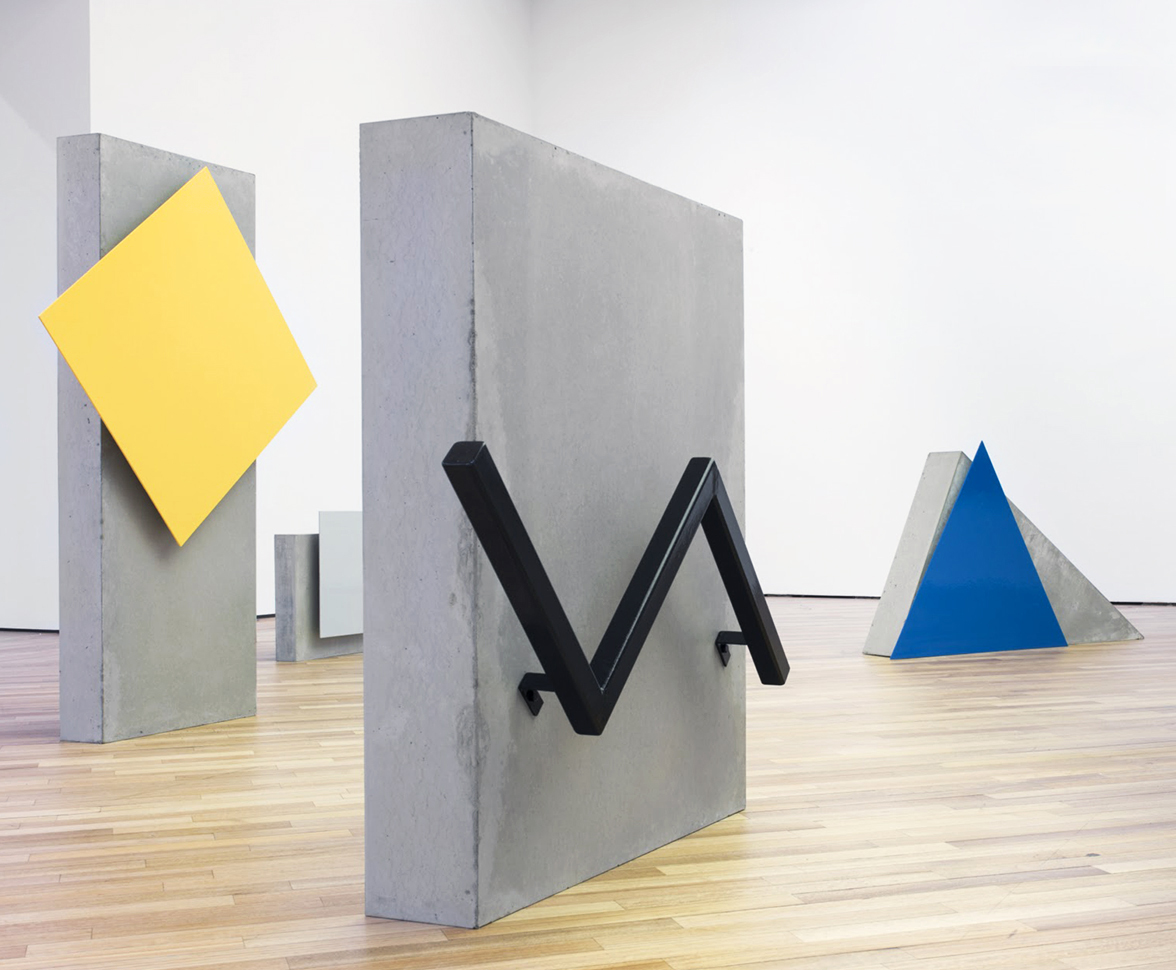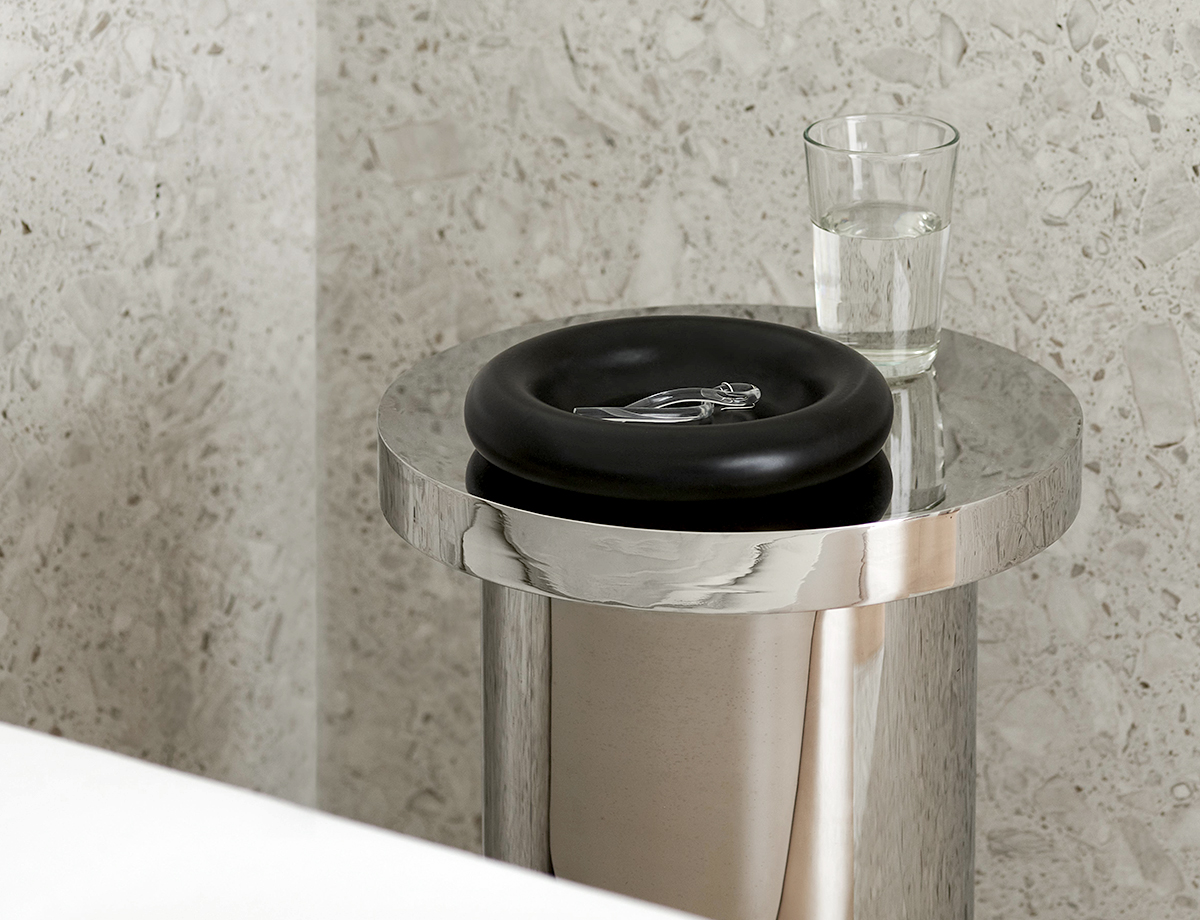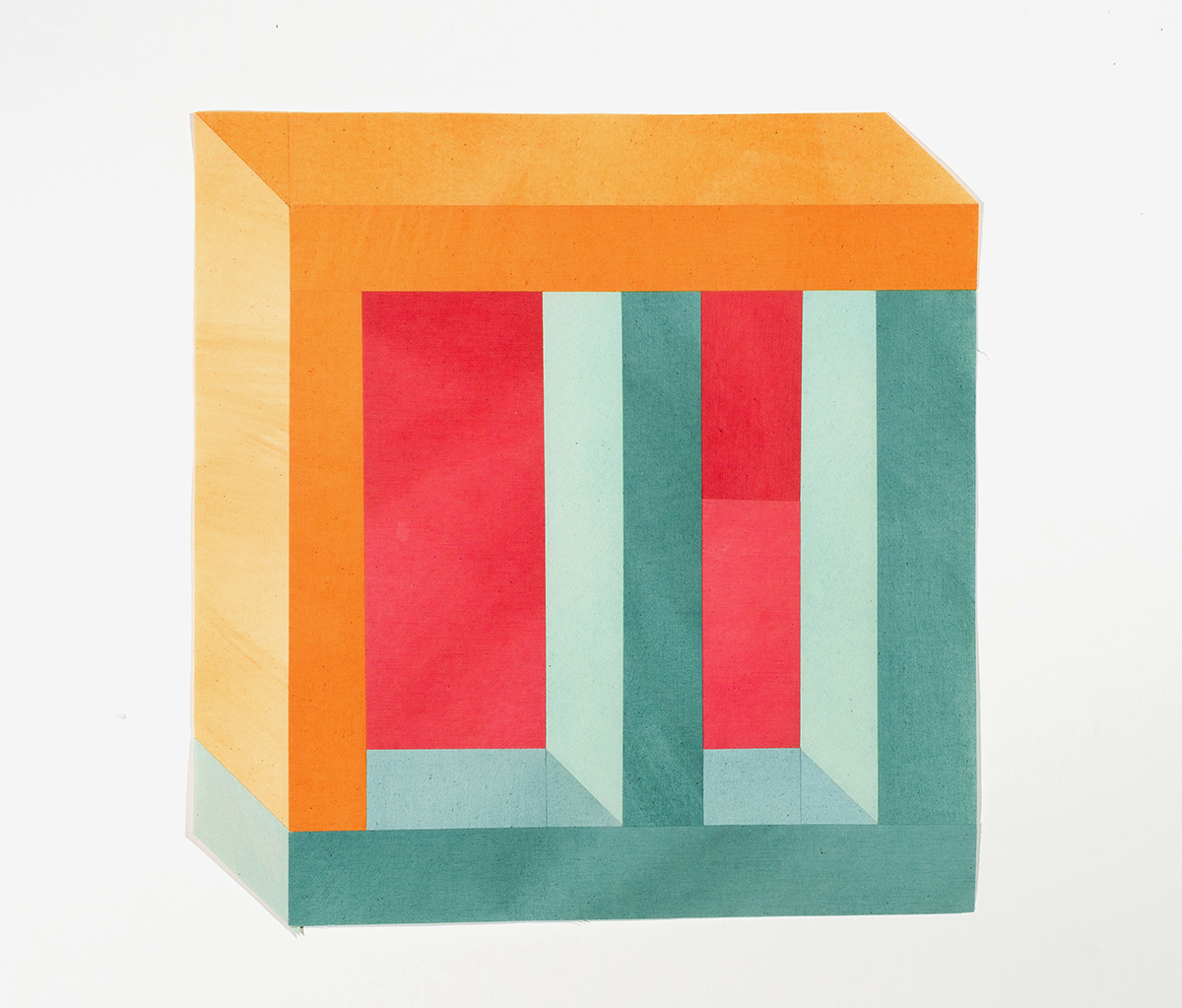
06.03.22
Q+A
Gabrielle Teschner on Why Being an Artist Is a Job You Can’t Lose
Through the prism of technology and screens by which we so often encounter art and design these days, textures soften, dimension flattens, scale drifts out and detaches from its context. When I first saw the work of Gabrielle Teschner, I questioned the size and materiality of these geometric compositions awash in fluid, pulsing color. Later, learning of their mechanics felt like a small revelation: an a-ha moment that drew me closer, made me crave the luxury of touch, of closeness, of asking questions. As it turned out, Teschner is interested in this negotiation of expectation, disparity, and convergence. “An observable constant of my studio practice is to place two seemingly distant topics on rafts and watch them float closer to each other over the course of months and years,” reads a caption on the artist’s Instagram.
Teschner’s signature “Sculptures-That-Are-Flat” pieces are made of individually painted planes of muslin that are stitched together, then ironed. Their scale ranges from hand-held (called ‘Minutes’ and measuring around 7×10 inches) to environmental, monolithic (up to 16×14 feet). Employing the symbolic and physical language of architectural forms, spatial relationships, and, often, weather patterns, Teschner explores dichotomies, concepts of strength and softness, force and flow, and phenomena of perception, among other impulses and ‘attractions,’ as she calls them. All of these are a way of understanding and questioning what it is to be in the world — a vantage that has as much to do with being an artist as anything else. Teschner’s belief is that being an artist “should have nothing to do with having a studio to work in” and “isn’t a job you can lose.” For Teschner, who is based between Richmond, VA and San Francisco, this faithful relationship comes from regarding those ‘attractions’ that tap on her curiosity and invite deeper investigation as something rather sacred.
Teschner’s new show, titled “Forest for the Trees,” opened last month at Reynolds Gallery in Richmond, offering new work that explores mass and gravity rendered in fabric, while re-centering the oft-unknown polychromatic palette found in Greco-Roman antiquity. Days before its opening (the show is up through June 24), I connected with Teschner in a sprawling conversation about the nature of creativity, architecture as activity, disrupting her methodology, and much more.
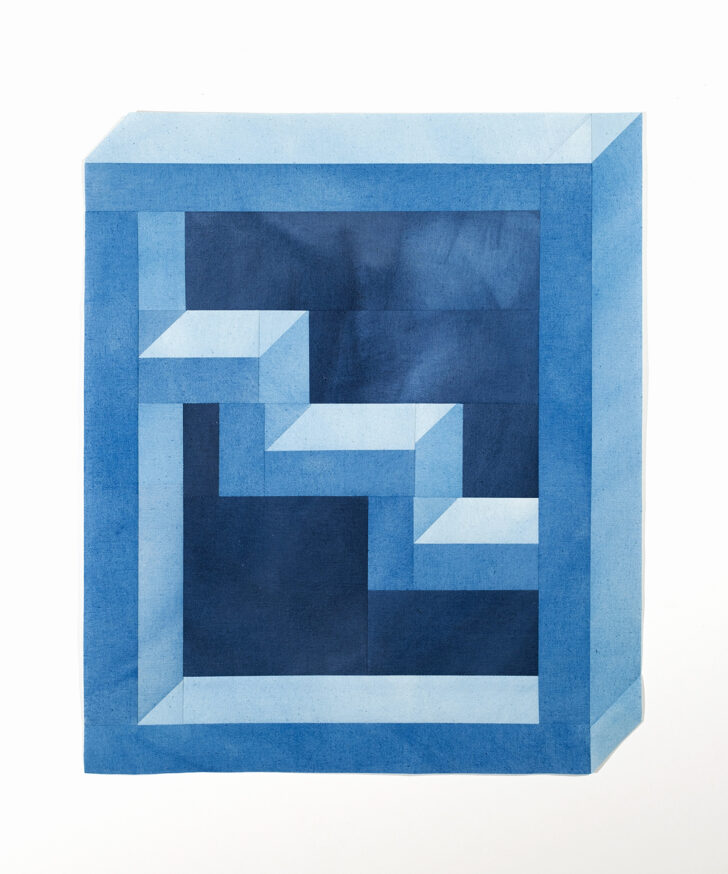
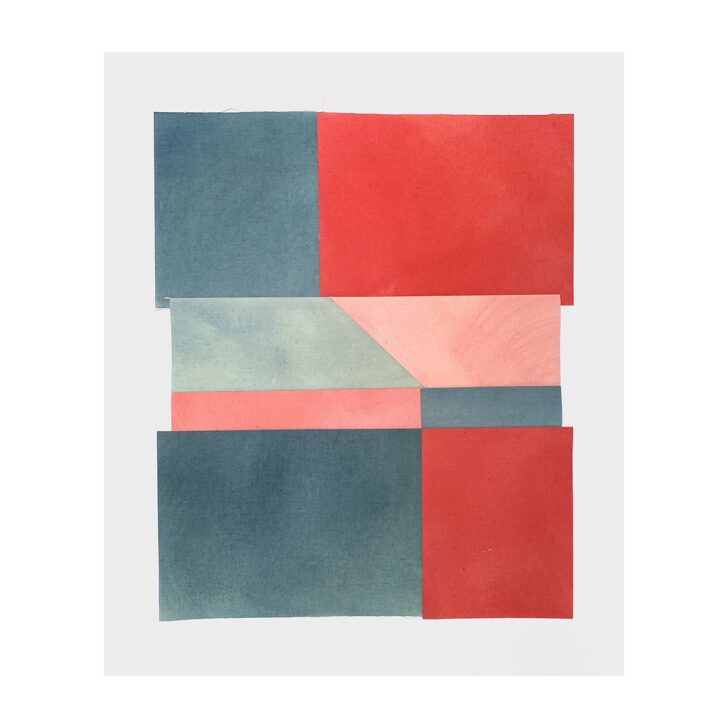
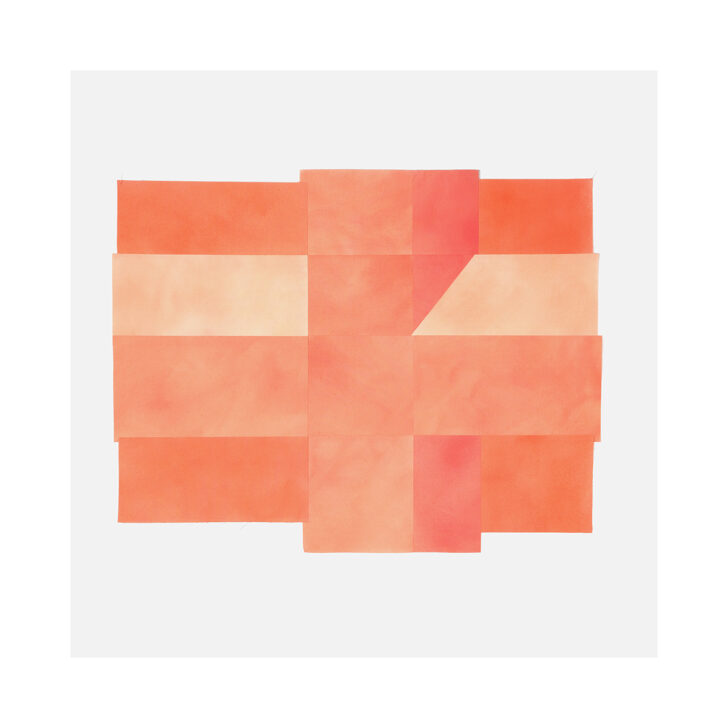
Let’s start at the beginning. What has been your path to becoming an artist?
I never weighed it against anything else. I was at the National Museum when I was 5 and I saw a Picasso, and I sort of scoffed — he gets to do that? Well, when he’s gone and I’ve grown up, I’ll take over.
It was the same thing when I discovered the discipline of sculpture in college. You can make anything about anything out of anything? I’m in. I’m for the oyster.
Of course, there were other things that encouraged a creative path. Growing up in a big family, next to a river, in the woods with a big garden. Some structure was always mid-build. My parents were a teacher and a student of philosophy. Questioning was valued over answering.
I’m curious about the evolution of your work and style. Did you ever make traditional sculptures?
I was making somewhat traditional sculptures during my first four years of art school. There was an incredible facility — a foundry, a woodshop, a welding studio, glass-blowing, all of it. Three floors: sculpture on the ground, painting up high, crafts in the middle. I used everything. I made huge sculptures out of plaster and chicken wire and I welded parts and I was sewing, too, because I knew how to do that from early on and it was a good way to go bigger and still keep the work light.
What I loved about sculpture was that it talked about space and involved space. Maybe the whole room, maybe farther. It was understood that you’d be walking around it, that there were multiple vantages. But the boundary of a work was undefinable. I imagined the audience of a painting was one person and that the audience of a sculpture was a crowd, whether they were facing it or not. So that was appealing, even if it was a concept I had fabricated.
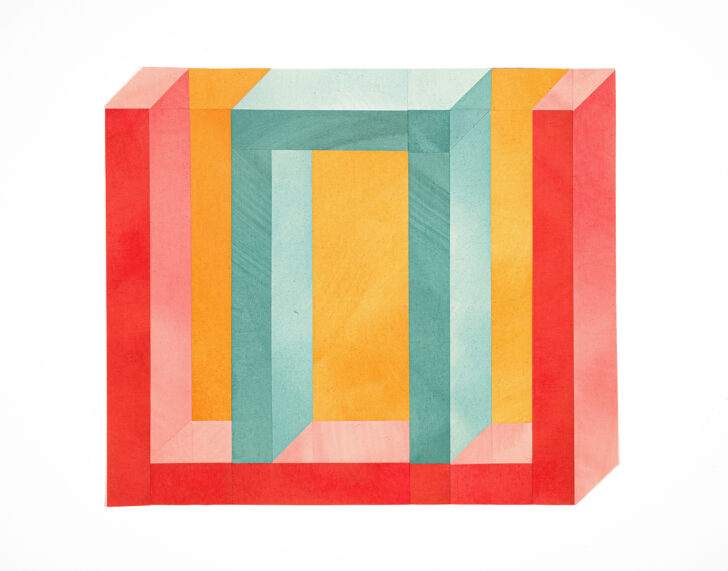
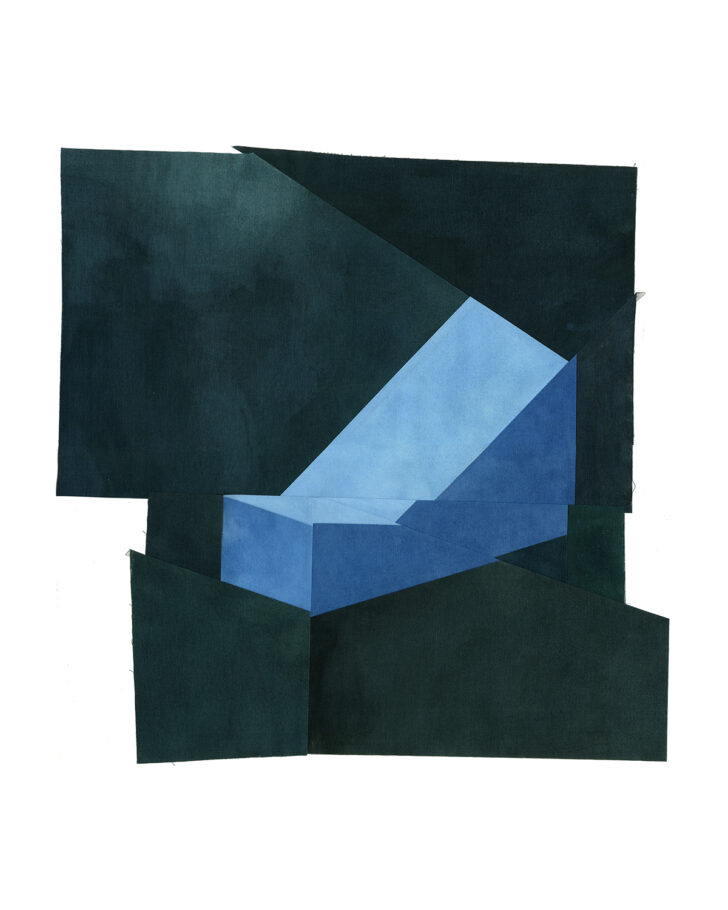
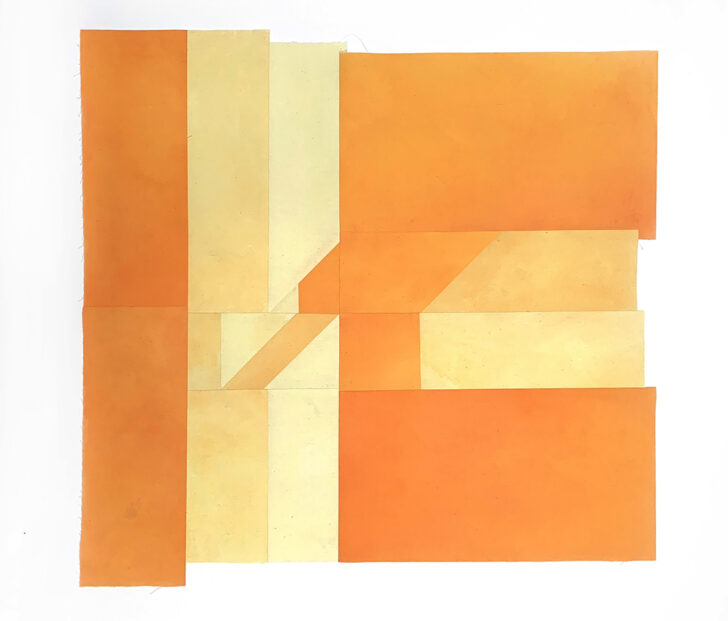
How did you arrive at this ‘sculpture that is flat’ style you primarily work in now?
When I decided to get my Master’s in sculpture in California and make the move from the East Coast to the West Coast, I was faced with the problem of what to do with all the big sculptures I had made in art school. I was coming off of five months in Southern Thailand where I acquired almost nothing except some tiny seashells and a scarf, so I was pretty unattached to anything called “mine” at that point. I ended up burying several of the sculptures and hiding them in the woods around my parents’ house. I didn’t want to do that again, so I spent the next couple years using paper and maps. Maps fold; they represent enormous territories and yet they fit in your pocket. They talk about so much but tell you almost nothing about being in the place — the weather, the light, the people.
When I made the jump to using fabric, it was quick. One day I wanted to make a flag, and I wanted it to be a fast flag, like one you would make if all of a sudden you arrived at a wonderful, unoccupied place and wanted to claim it as yours. I had some raw cotton muslin and I cut a square, then I cut an ‘X,’ which seemed like true flag language. Then I used watercolour to make the shapes red and black. And because I used watered down pigment, the flag looked old, like it had been waving in the sun for months. And then, some days later, I wanted to make a mosaic wall that you could carry like a flag, so I made that, with all the squares dyed in a mosque pattern.
Then, after a stair jog in the Oakland-Piedmont rose garden, I made a staircase piece — a grey concrete stair with three steps. That’s when I got really excited. I thought, ohhhh, now things are heavy, now I’m building again, I can climb this. And then I went from there into columns, pillars, bricks. I was using the fabric to talk about everything except itself, but it was always there, being flexible, being portable, yielding. Counteracting and complementing structure, permanence. I use that balance.
The phrase itself — Sculpture That Is Flat — that happened in Medellin. I was doing an art residency there and someone asked me about what I make. English was their second or third language so I was trying to keep things simple and straightforward. I said, “I make sculpture…that is flat,” and later something felt important about that response. Not true, but important. It pointed to a question about being in space, and occupying space, slightly or substantially.
Do you sketch your pieces out first? What is your favorite part of the process?
I do sketch them out first. Sometimes directly on the fabric, sometimes by tearing up pieces of colored paper, but most often now on grid paper. I make a “cut-map” of how everything will be divided, and the order of how everything will be sewn back together after the cloth is painted. Sometimes, I’m thinking monumentally and my arms are outstretched and I’m gauging scale against the limbs of my body.
I think my favorite part of the process is when I sew a seam, and the composition is hidden from me, and then I take it over to my ironing table and press the seam open with an iron and find out how it all came together. I see how everything lined up, or didn’t line up. That seam is a ditch, it’s a valley to me — a significant demarcation, a border between territories, here and there. I love that. It’s a special kind of line I don’t get with other materials. It seems that it is physical, with depth. That it has attributes. But, it is just the space between two things.
Another thing that happens is when two of “the same greens” get sewn together, it isn’t until they are tightly joined that you recognize their subtle differences.
Tell me about the sewing — do you feel any connection to craft traditions?
Not really. Sewing is more about tying two things together in my process. I use it more like a shipwright uses sailcloth and line. When we get this thing together, it will catch wind and take us South! It’s about translating forces.
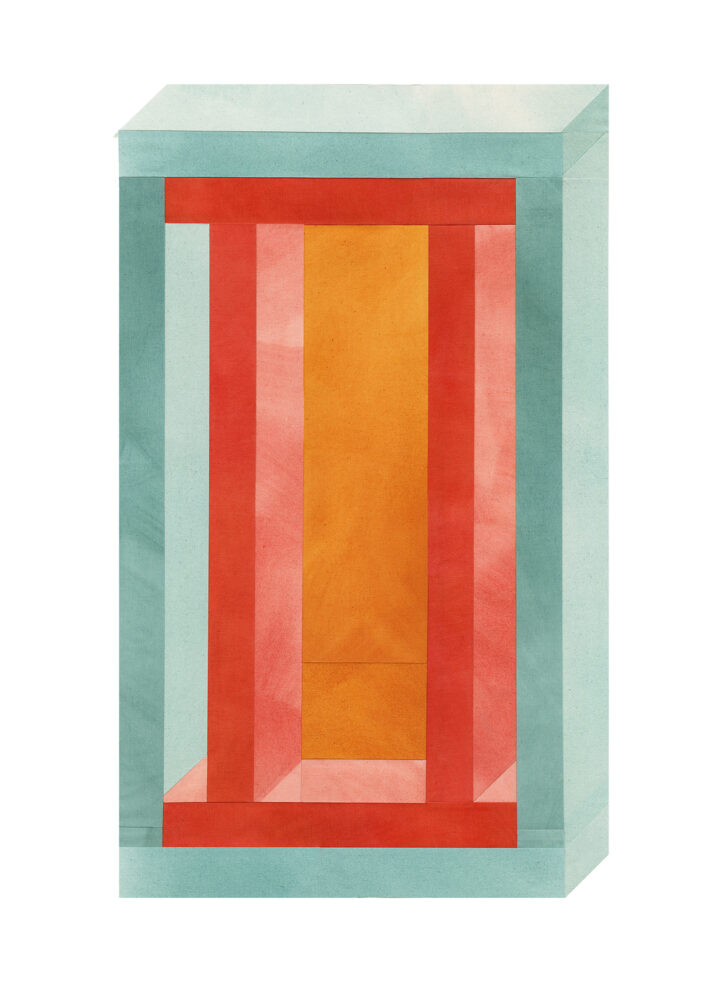
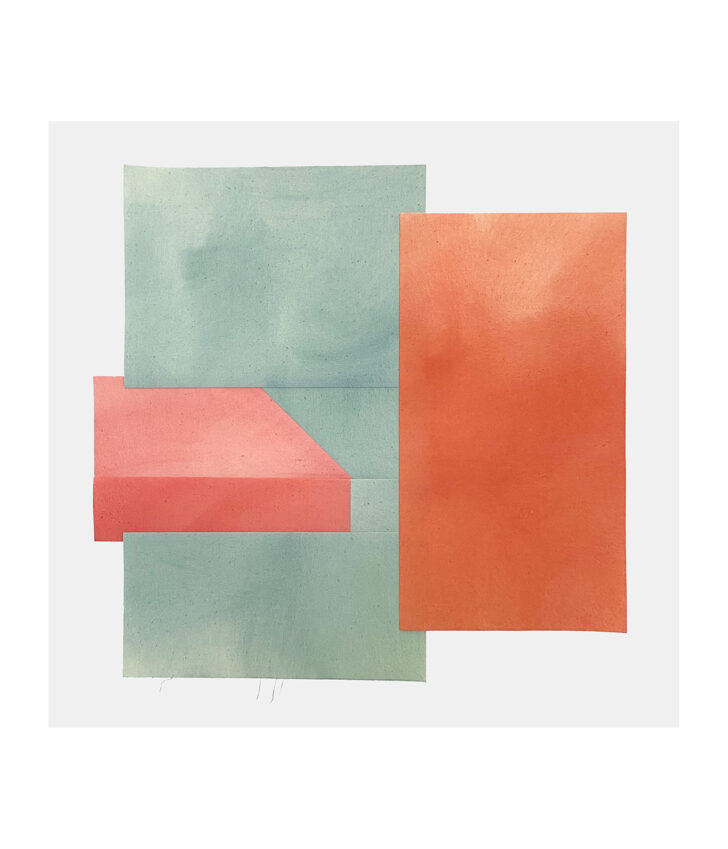
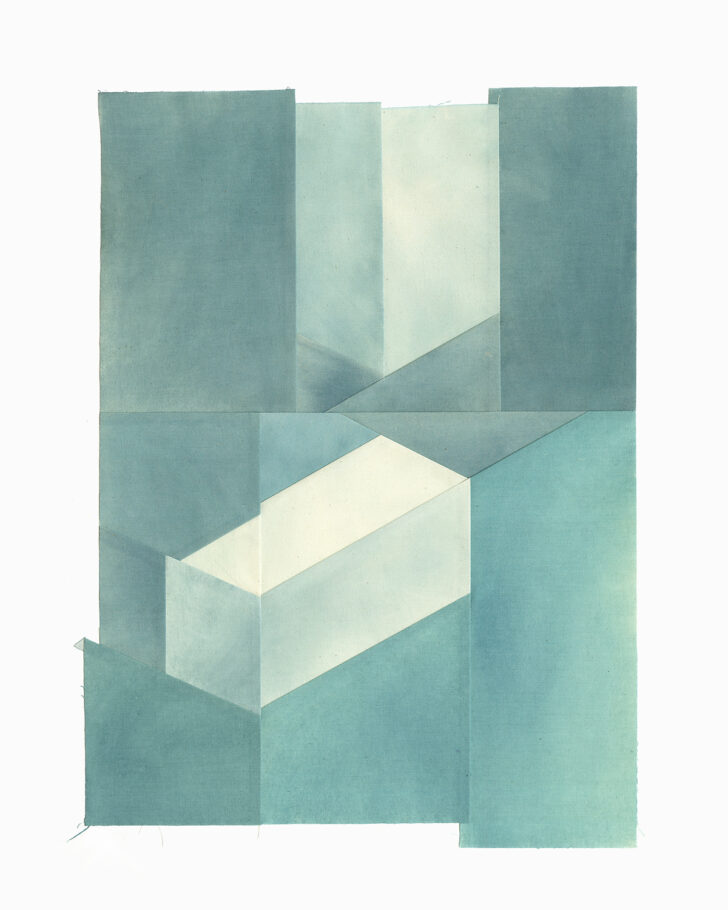
A lot of your work draws on architecture and geometry. Can you speak to that interest or what that might be about?
The thing about architecture is that it isn’t outside of us, it is about us. And usually, there is a distinction made between nature and architecture, but I think of the things we build as more an arrangement of what is natural, so I place more emphasis on architecture as an activity rather than as an object. That’s not something I’m trying to broadcast necessarily or that I’ve understood all along, but it’s something I come to understand as I continue to make this work.
In the sculptures, not only is there a three-dimensional object rendered but in some of the work the painted space surrounding a painted object arranges briefly into form because of the shading of the planes.
Do you mean sometimes a “background” might attach itself to the “object” and vice versa? That the object/subject is fluid?
Exactly. I am very interested in this — the phenomena which contribute to a thing appearing to exist. A shaded section supplies a viewer with the perception of dimension, offering evidence that it extends into space by inches or miles, and on the other hand, goes nowhere. If the production of perceived dimension, such as with an architectural object, can be so simply delivered, who is to say that the qualities of the actual object in the world, with all its attendant force and strength, are not also based on illusion. At the very least, this concept gives me a sensation of freedom when the laws of the material world seem overwhelming.
Can you tell me about the pressure drawings I’ve also seen you sharing on your Instagram?
Well first, I wanted to call them pressure drawings to illuminate the importance of force. The use of my iron is an overlooked part of my process, but it’s one of my most essential tools. It combines all these forces: pressure, time, and heat. You can use more of any of them to press a fold, and they determine the sharpness of my lines. With the drawings, their appearance depended on the force of my arm pressing this eraser into the paper. And they are little bricks. Bricks make up my whole neighborhood including the sidewalks. The city was changing all the electrical poles one day and digging up piles of bright red earth. I asked them “What is that? It looks like ground-up bricks all the way down.” They said that most of Richmond was made on the spot, that the bricks were just formed of the dirt under the ground.
That reminds me of the term “functional units” in anatomy…
I’ve never heard of that, but I’m struck by this idea of a “smallest particle.” I read through Vitruvius’s ten books of architecture this year and he talks about “indivisibles,” or “bodies that cannot be cut up”, which was an early concept of atoms. And in the Yoga Sutras, they talk about an “anu,” which is thought of as a particle that still has all the attributes of what it becomes. It’s connected to what is largest. I use the brick picture like it’s the smallest particle of architecture, the symbol of starting small with a limitless capacity for scale.
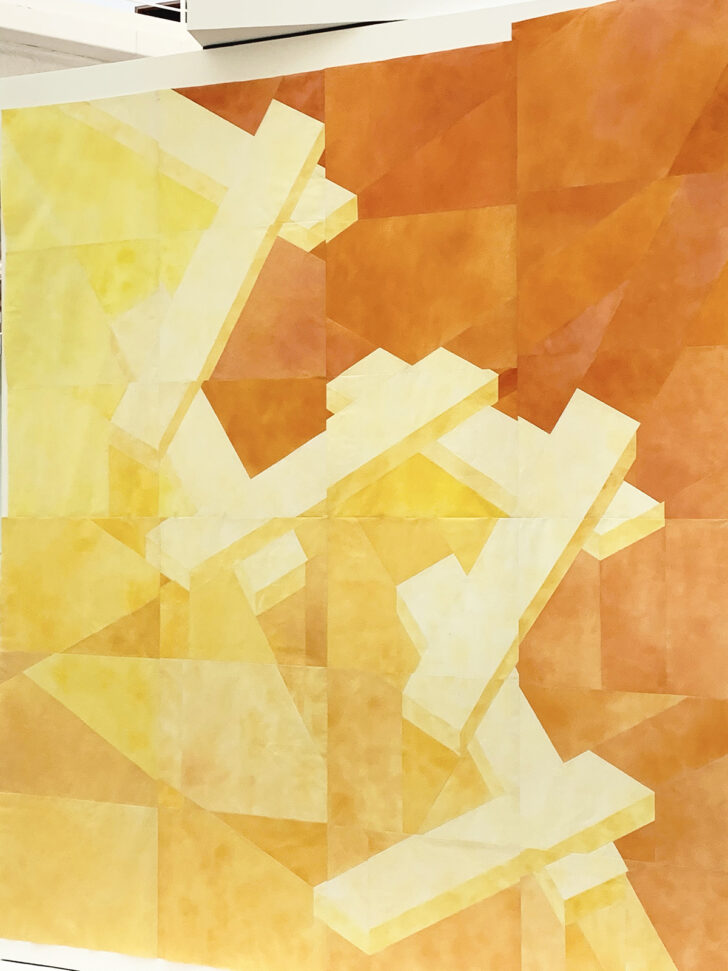
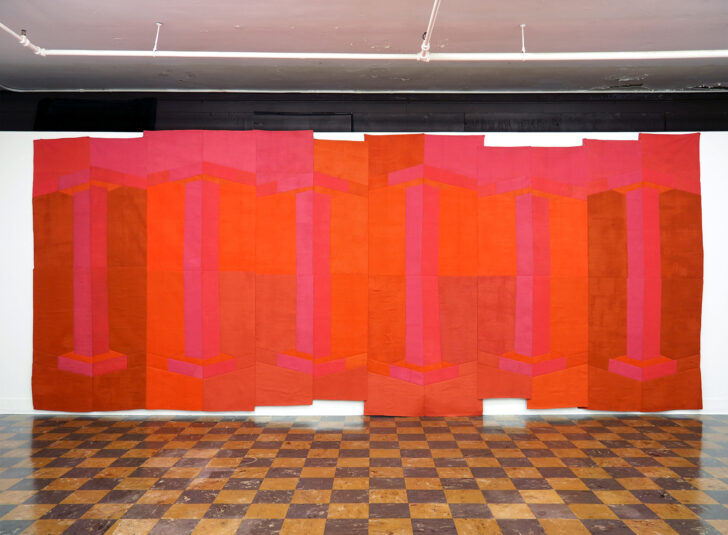
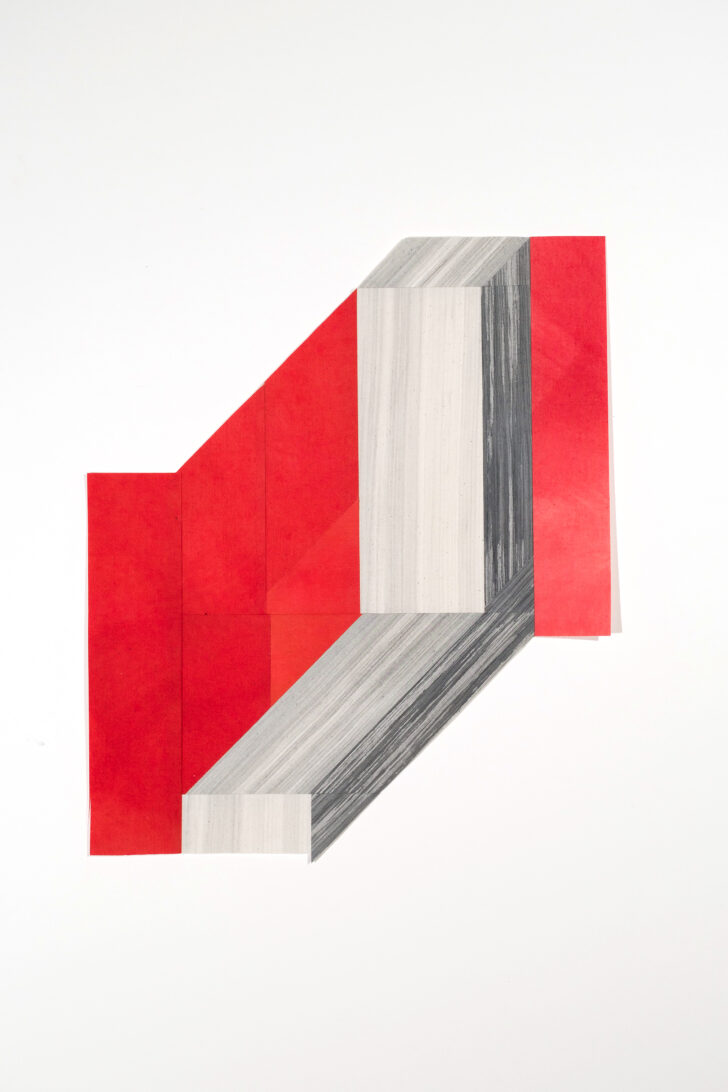 Your work spans the spectrum in terms of size. How do you think about scale?
Your work spans the spectrum in terms of size. How do you think about scale?
It’s a challenge to make textiles communicate strength but it’s a victory when it does. When it works, the really large-scale sculptures occupy space in such a way that you tend to forget the ‘actual properties’ of it being flat and lightweight and enter into an imagined space where permanence and mass can be discussed. There are interactive differences between the small work and the large work that interest me. Like a column that is meant to support a municipal facade, for example, that you can hold in your hand… or a flight of stairs that you can lift the corner of and walk behind. This is how the sculpture has an architectural conversation without being architecture itself. Without its common usefulness, it can be considered symbolically. I don’t really have a legacy impulse — that is, a desire to have something exist much longer than I will. I wonder if it is an error to emphasize the value of something being able to last forever, or a building that will persist over many centuries. Why wouldn’t we make things to be as mortal as we are — to be useful and beautiful and full of life while they last, but then to cease or change. What would that look like and how would it change our relationship to our own impermanence?
On the small end of the spectrum, I’ve also seen you experiment with folded paper sculptures, mostly on your Instagram and while traveling. Can you tell me about that?
Those are other ways that I think about the shapes and the themes without getting too narrow about my usual materials, which can be very methodical and measured. They let me be playful and work through things intuitively. But they also help to isolate a particular thread. Like the performance of “unfolding” the paper columns and cubes when I travel. I try not to decide what they mean exactly. I know it has something to do with form and the collapse of form. It also has to do with my stubborn declaration that being an artist should have nothing to do with having a studio to work in. This isn’t a job you can lose.
I think that what I make are objects of contemplation. They are material things, but they are always a vehicle toward something or some thought outside of the material. When I carry a sculpture abroad and place it on a ledge overlooking ruins, or near the ocean, I am asking, what does this have to do with that? How does that help me understand this, and what does the bridge look like between them? There is a wonderful term in Chinese and Japanese gardening meaning “borrowed scenery”. There is distant borrowing (like mountains), adjacent borrowing (like nearby buildings), downward borrowing (like rocks), and upward borrowing (like clouds). They are things beyond the garden that can be considered in the context of the garden. I love the idea that a work does not always end at its edges.
Thinking about how being an artist is not a job you can lose… has there ever been a period of your career where you have lost your muse or lost the thread?
I was just thinking about that this morning. And I know it’s odd to say, but no. I have never not had an idea about something I wanted to make or try out or explore. I don’t know why that is, because I’m familiar of course with artist block. I guess I don’t make many judgments about my attractions. I say “this is important somehow.” I think what I do is I put a lot of trust in my attraction to topics, subjects, colors, forms. I just say, “Well, there’s a reason here that I’m compelled in this way.” And I consider that impulse to be connected to something more universal. If I’m attracted to it, there’s going to be other people attracted to it, asking the same questions. I have this process where I can address those attractions in my work, and it’s been effective. I have trust in the process. I don’t think anyone lacks for idea. But I think you hear people say “oh, that’s a stupid idea, or that’s too simple, or not interesting enough, or it won’t matter to someone else.” And I think that’s the danger, thinking that something you enjoy pursuing would have no quality outside of you.
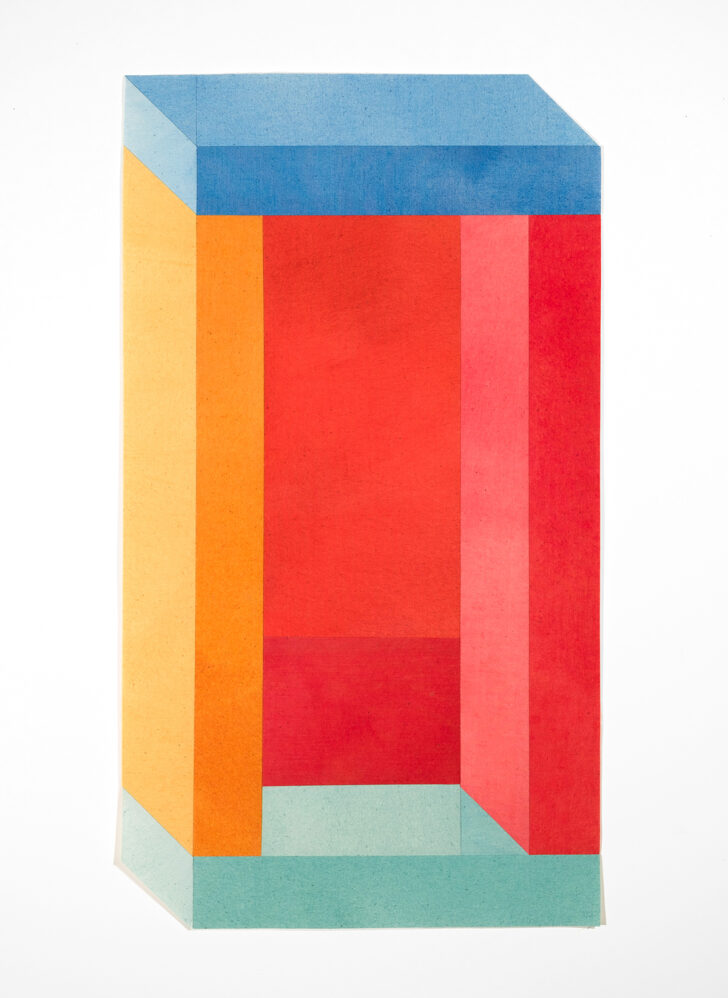
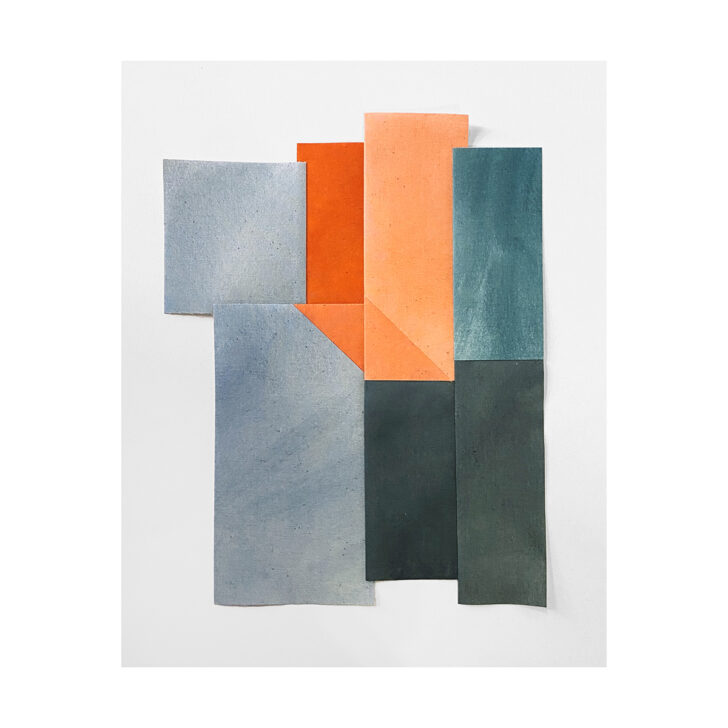
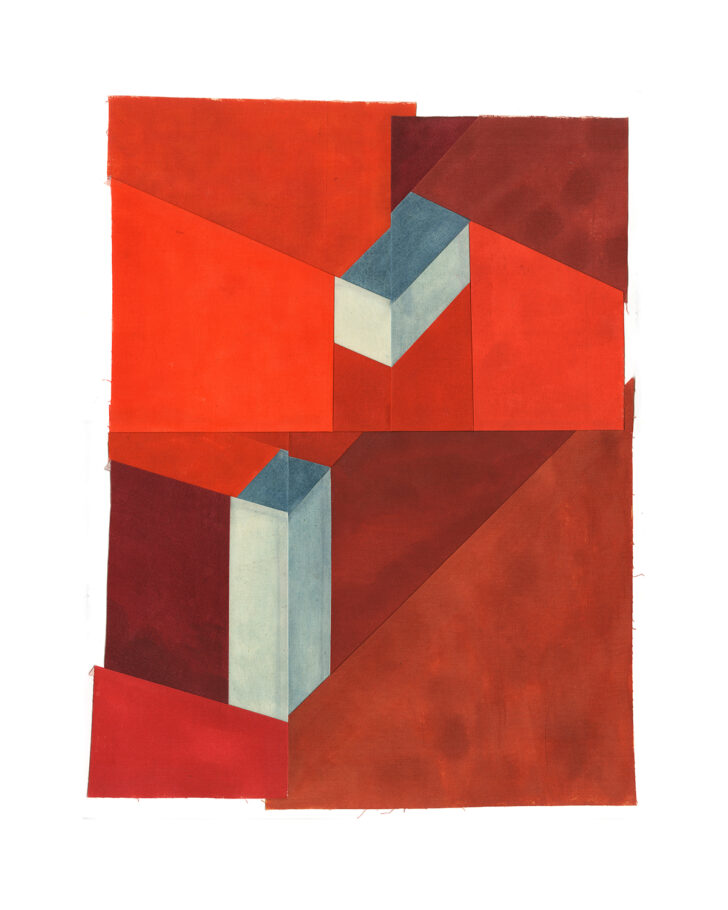
Your recent work is quite colorful. Can you tell me more about your relationship with color?
When I started this work it was almost only gray. I was interested in creating a concrete or granite-looking surface because it was most disparate from the muslin. It was the heaviest, hardest, the brutal-est. It represented the apparent permanence of anything built on a solid foundation — either a building or a concept like “math” or “time.” All very serious.
There was an important moment after I’d been renovating my kitchen by hand. I’d made a model of my cabinetry from balsa wood and asked the miller to mill the cherry boards and the walnut down to the dimensions of the balsa wood so it would be easier for me to scale up. I was living with the raw material for a few months at that point and it smelled wonderful and it was like a stack of trees in my living room. After I finished building the kitchen, I traveled to the Keys for a month to make work. I was finally borrowing color from all these botanical sources, and asking why and being really unsure about it like it was a vulgar move, but going for it because it was all so stimulating, the green-golds and the coral pinks, and the cactus blue. And then I turned a corner, saw the palms spilling over the fences and I realized my kitchen and every house everywhere was made of this, these wilds, this overgrowth.
Slowly, I started using more color as I collected architectural surfaces from places I traveled. It started in the Keys, where white was added to housepaint to reflect the sun. And then in Yucatan, where bold plaster hues marked divisions between one residence and the next. I looked at Luis Barragán. I understood color as functional rather than arbitrary, but very potent. All the colors I was using were documenting different observations about weather and plants and structures.
I started using the term “Tropical Brutalism” to refer to the series and used climate as the impetus for that mottled washy texture. A particular type of weather will guide the mood of my approach. I’ll paint humid or stormy, as if afterward I could use the parts to make buildings out of weather. Using all this color has made my practice infinitely more enjoyable. It’s the vocabulary of the natural world, how it pulls at all of us, and guides our behavior.
You’re speaking about your home in the Fan District in Richmond, VA that you have done a lot of renovation work on, yes?
Yes. I started working on the house I live in now as a side job, but it became more than that as I built things that I learned from. Doing tiles and flooring and plastering, all of that is very parallel work, sketching plans and alignment and attention to detail — but maybe most important is having endurance, and I get that from my practice, knowing things take time and many small tasks will build a large room.
When the work from my studio became more demanding and I had more commissions, I’d be switching from house-work to artwork frequently in a day and it was helpful that they interact and support one another. I used the drawings for actual wood joinery to do fabric sculptures of wood joinery. And the “plank” was a perfect subject, sometimes appearing to be of handle-able size and other times, a building with many floors.
One concept I’ve come across in architectural history that is echoed in my renovation projects is the attempt to convey strength visually when it is not necessary to the engineering. That’s sculpture. I use steel rod that is higher gauge than it actually needs to be so that I feel like the shelves won’t fall. I found Japanese architecture is very conscious of that. The dimension of beams, the tapering of supports. And most recently, I read a 100-year old theory that color was applied very strategically to the tops of classical columns and anything not load-bearing so they seemed lighter. So the impression of strength is what ends up being important, an impression of longevity.
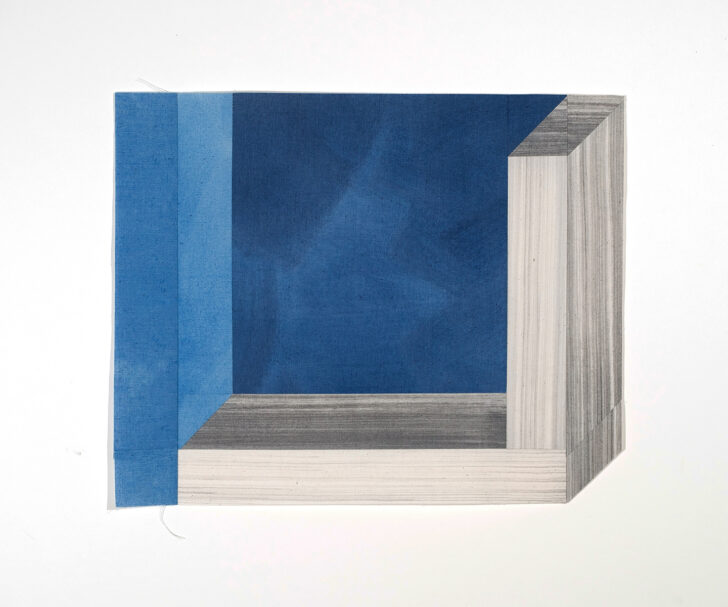
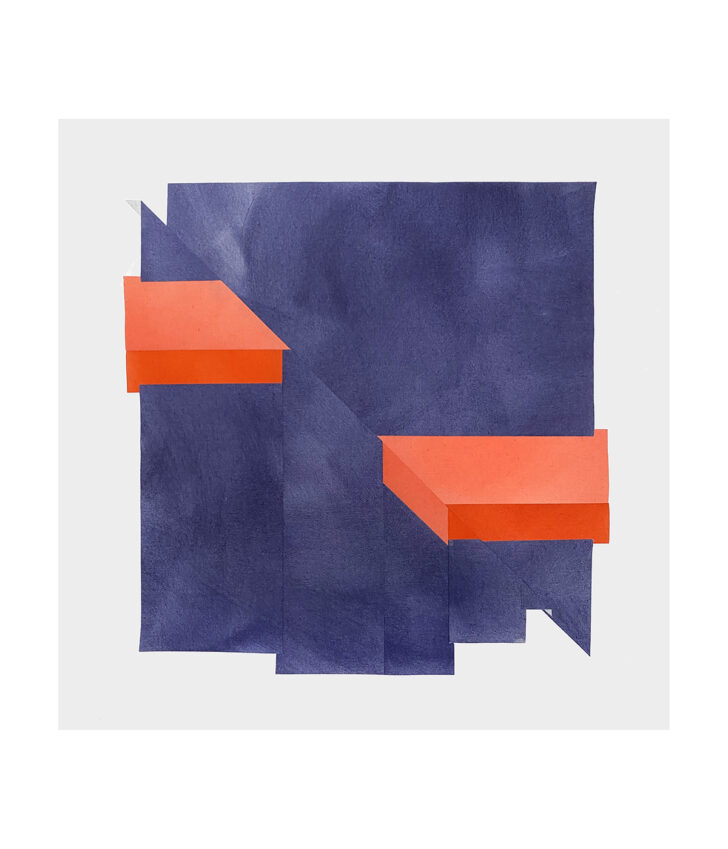
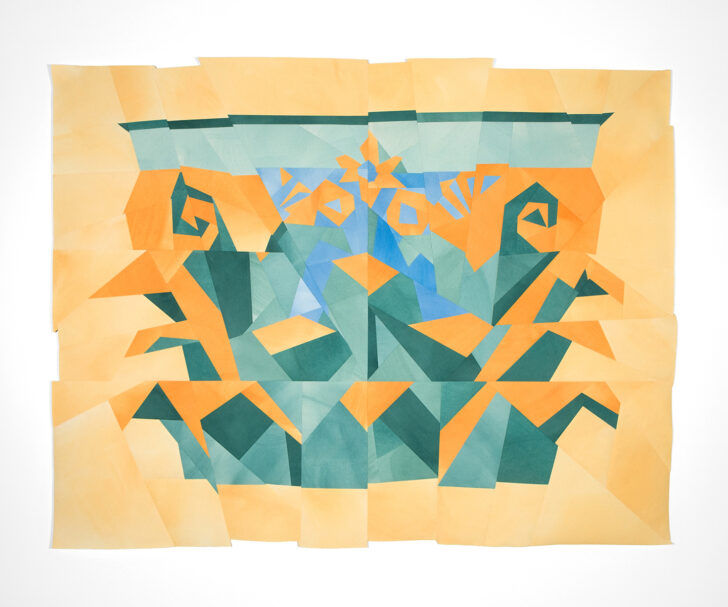
What was the impetus for your solo show, “Forest for the Trees?”
I wanted to see what a bridge between Tropical Brutalism and the symbols of Roman antiquity would look like… to link these seemingly disparate obsessions, and so I’ve been working on pieces about polychromy and dirty marble and a triptych called “The Forest.”
I went to Rome for the first time in October, floored by the quantity of all the architectural fragments lying around like alphabetical rubble. I realized the neighborhood I live in is a mini-Rome. And the house I live in is Greek revival with dentils and entablatures over the doorways. But what really got me, is that none of it was ever clean like that, it was all painted with riotous mineral pigments. The ornate Corinthian column has this plant hiding at the tops of all the columns, for one, and as it turns out it’s a tropical plant that was most likely painted red and orange and green and blue. The discovery of color in Ancient Greece and Rome happened when printing was primarily in black and white. So maybe it didn’t catch on because of that. Apparently, it made the esteemed archaeologists angry. Color wasn’t tolerated in that context.
Can you tell me about some artists/designers/thinkers who are or have been important to you in some way?
When I first went to Merida in 2018 I found a book on Barragán at a yard sale. There were aspects of his residential works that reflected things I was experiencing in walking the streets of the old city center, the concealing and revealing of volumes in the arrangement of walls. Barragán intended to guide your experience of entering the home and finding refuge, and while he elevated the importance of spending time in gardens, he actually condemned windows. He was limiting perspective to a particular vantage. I was reminded of my favorite Sicilian director Luca Guadagnino, also an occasional designer of interiors, and how they both emphasize place and the environment surrounding the main stage. Maybe it’s because they both come from cultures that value courtyards. I had them on my mind when I was designing and building the kitchen and built-ins here where I live and work. Anything that happened with the kitchen at that time, found its way into my artwork. Looking back now, the sculpture “Divisions of the Blade” from my Tropical Brutalism series is incredibly similar to a wall of cabinets Guadagnino designed for a silk mill on Lake Como.

